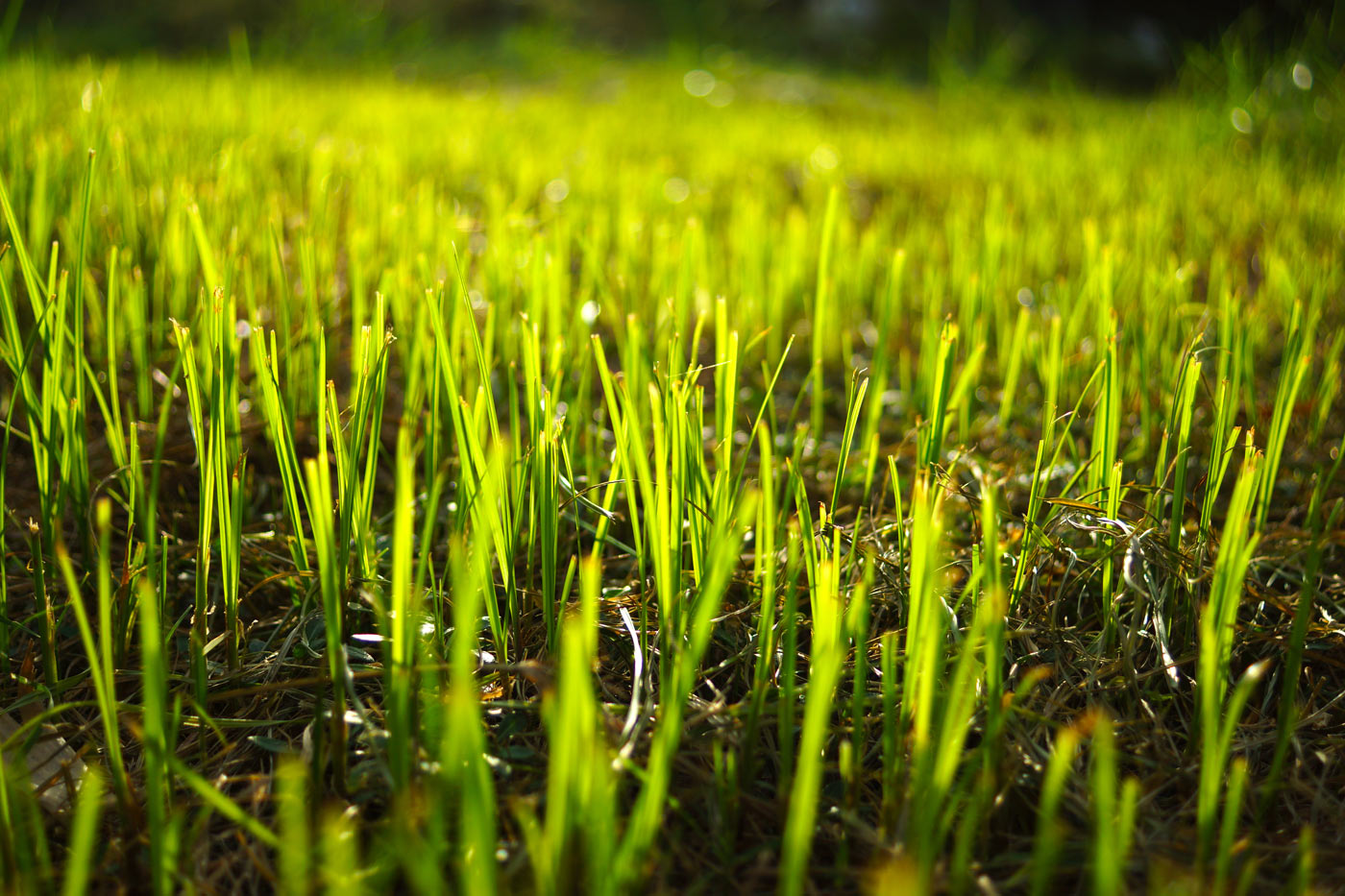How To Germinate and Establish Grass Seed

Seed Needs
There are three key factors which drive successful germination and establishment of grass seed:
| Water | Oxygen | Warmth |
Water
Seeds need water to start to swell and soften, initiating the germination process. Germination then occurs when the first tiny root hairs emerge from the seed. From this point moisture continues to be a key requirement, preventing the emerging seedling from drying out before it can connect with the soil or growing medium and become established.
In the autumn there is a high chance of enough precipitation to enable young grass plants to build strong root systems during warmer periods. In the spring we are, in theory, heading towards increasing dryness. Grass plants that germinate in the spring have less time to build up resilient root systems, reducing their ability to survive the upcoming dry weather.
Oxygen
The energy for seeds to germinate comes from the respiration process in which oxygen from the air reacts with the seeds stored sugar reserves to release energy, enabling cells to divide and grow. The amount of oxygen held in the pore spaces of a soil can be reduced if it is waterlogged, compacted or has a hard surface. Good soil management helps to ensure that grass seeds have sufficient oxygen for germination and onwards growth. Correct sowing depth also helps to ensure the seedlings have enough energy to establish:
| Species | Optimum sowing depth (mm) |
|---|---|
| Perennial ryegrass | 12-15 |
| Red fescue | 4-5 |
| Browntop bent |
1-2
|
Warmth
Warmer soil temperatures increase the speed of enzyme reactions and processes such as cell division leading to faster germination and establishment. Each grass species has a slightly different range of preferred temperatures for germination:
| Species | Optimum temperature range (°C) |
|---|---|
| Perennial ryegrass | 7-25 |
| Red fescue | 15-25 |
| Browntop bent |
12-21
|
Soils act like a storage radiator, taking time to build up heat initially but over time storing the residual solar energy. Inevitably, the soil will be much cooler in the spring than in the autumn even if air temperatures are similar because there has not been sufficient time to build up residual heat. Germination therefore tends to be slower in the spring than it would be later in the year.
Finding a balance
The factors which drive successful germination and establishment of grass seed tend to occur in the UK in the spring and the autumn which is why these are the key times for seed sowing. However, there are important differences between these seasons.
Autumn: Consistent moisture and warmth without extremes of cold or dry
Spring: Good moisture potential but, a risk of both cold and dry weather
The good news is that with knowledge of seed establishment requirements and environmental conditions it is possible to successfully establish grass seed in both the autumn and spring in the UK.
The key point is that while you cannot control the weather, you can control the amount of water that is provided and improve the aeration of the soil.
Process
| Prepare the ground | |
|---|---|
| New Seed Bed | Over seeding |
|
|
| Provide water |
|---|
|
|
Sow seed |
|
|
Provide water |
|
| Provide nutrition |
|
